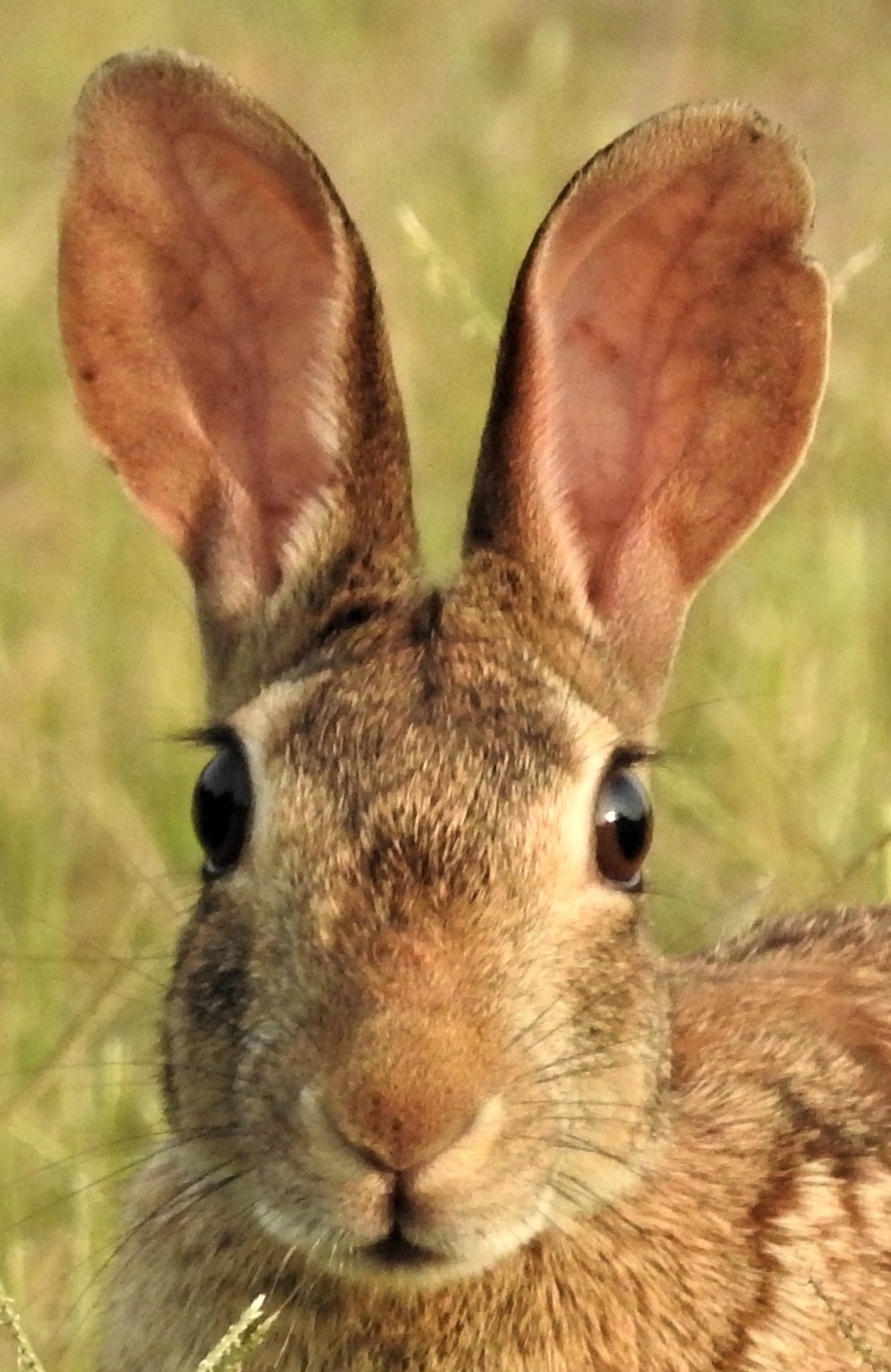by M. Kathy Raines

The big-eyed cottontail, crouching amid a bed of purples, mimicked a garden statue. A four-foot bull snake sprawled nearby, alert to the slightest motion. Neither budged. I watched for twenty minutes, rooting for the rabbit, but never saw how the drama played out. Snakes can be mighty patient.
Like other ready-to-eat creatures popular with local predators, the eastern cottontail (Sylvilagus floridanus), along with its fellow local, the desert cottontail, employs several defenses to avoid becoming supper. Sensing danger, it may lower its ears and crouch, flattening itself to blend in with dirt and rocks. Also, with its powerful hind legs launching it 10 to 15 feet, it can flee at up to 18 mph, circling and zigzagging to obscure its scent trail.

Rabbits have long starred as clever heroes and amoral tricksters in myths, folklore, cartoons and literature, from indefatigable Bugs Bunny—whose origins might well be traced to both African and Native American tales—to the thoughtful, methodical civilization builders portrayed in Richard Adams’ novel Watership Down. In fact, it was that novel that coaxed me from my previously held notion that prey animals were not as clever as their adversaries—a foolish idea indeed. It takes brains to live in the wild. A cottontail, on the menu of a vast number of locals, including hawks, snakes and bobcats, must graze with utmost efficiency. Sometimes rearing up on its hind legs, it sniffs, listens and, watches for danger, its lateral, protruding eyes offering 360 degree vision, minus a blind spot in front. Cottontails forage quickly, then flee for cover.
With cottontail reproduction rates high, hungry raptors and coyotes enjoy a ready supply. Contrary to legend, rabbits do not mate more than other mammals. However, since copulation in rabbits stimulates ovulation, each act should produce offspring. Also, a mother can mate shortly after giving birth. Gestation lasts only a month, producing from 3 to 8 kits, and a mother may bear 3 to 5 litters annually. Offspring can breed at 2 or 3 months of age. One pair of cottontails, presuming none die, can create 350,000 offspring in five years. Few, though, live longer than a year.
Prior to mating, males fight and show off, jumping over females and vise-versa. About a week before delivery, the mother digs or finds a shallow depression, which she carpets with vegetation, loose fur and fecal pellets. Each minute or so, she bears a blind, hairless kit. Then she seals the burrow to conceal it from predators.
Giving the lie to heart-warming bunny stories, cottontails tend to be loners, and the doe is a rather hands-off mom. She doesn’t groom offspring or search for lost ones. She returns to nurse kits only at dawn and dusk—presumably to keep their whereabouts hidden. Newborns, however, cuddle and lick one another for warmth and companionship, appearing to bond closely. Kits may go exploring and foraging at two weeks and, at about a month, fend for themselves.
A cottontail shares the order Lagomorpha—distinguished partly by four incisors and furred foot-bottoms—with hares, like our local black-tailed jackrabbit. The larger, longer-eared hares bear open-eyed, fuzzy offspring.
The eastern cottontail, abundant in brushy areas throughout most of Texas, forages mainly on grasses and flowering plants and locally, mesquite beans and the flesh of prickly pears, usually at twilight or nighttime. Cottontails, along with fellow rabbits, also consume nutritious droppings—shielded from digestive juices by rubbery mucous—directly from their large intestines.
While ranchers fret over forage-depleting jackrabbits, cottontails present more of a problem for gardeners. Rabbits, unprotected in Texas, may be trapped and shot, but one can also deter them by planting marigolds, yucca, salvia or other plants or guard plants with chicken wire or nets. Also, wind-chimes may deter silence-loving rabbits. Repellents are available, but some require a licensed exterminator.


